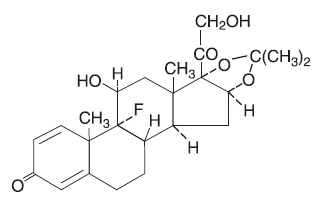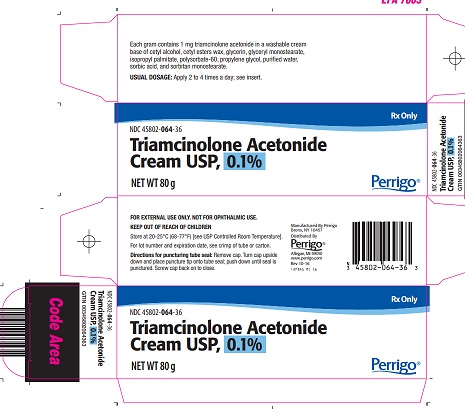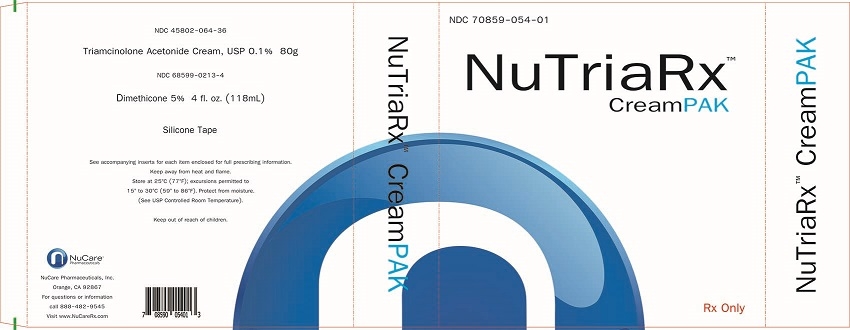NuTriaRX CreamPak by NuCare Pharmaceuticals,Inc.
NuTriaRX CreamPak by
Drug Labeling and Warnings
NuTriaRX CreamPak by is a Prescription medication manufactured, distributed, or labeled by NuCare Pharmaceuticals,Inc.. Drug facts, warnings, and ingredients follow.
Drug Details [pdf]
NUTRIARX CREAMPAK- triamcinolone acetonide, dimethicone
NuCare Pharmaceuticals,Inc.
Disclaimer: This drug has not been found by FDA to be safe and effective, and this labeling has not been approved by FDA. For further information about unapproved drugs, click here.
----------
Uses
For the treatment and / or prevention of diaper rash temporarily protects and helps relieve chapped or cracked skin
Warnings
For external use only.
- When using this product
- do not get into eyes
Do not use on
- deep or puncture wounds
- animal bites
- serious burns
Stop use and ask a doctor if
- condition worsens
- symptoms last more than 7 days or clear up and occur again within a few days
keep out of reach of children
If swallowed , get medical help or contact a Poison Control Center right away.
Directions
- Cleanse skin with Thera Moisturizing Body Cleanser or Thera Foaming Body Cleanser
- Apply cream liberally until entire area is covered
- Apply as needed
Inactive Ingredients
Inactive Ingredients:
Purified Water, Glyceryl Stearate, PEG 100 Stearate, Stearic Acid, Aleurites Moluccana Seed Oil,
Cetyl Alcohol, Glycerin, Butylene Glycol, Carthamus Tinctorius (Safflower) Seed Oil,
Dimethicone Crosspolymer, Calcium Pantothenate (Vitamin B5), Maltodextrin, Niacinamide (Vitamin B3),
Pyridoxine HCL (Vitamin B6), Silica, Sodium Ascorbyl Phosphate (Vitamin C), Sodium Starch Octenylsuccinate,
Tocopheryl Acetate (Vitamin E), Disodium EDTA, Sodium Hyaluronate, Aloe Barbadensis Leaf Extract,
Zingiber Officinale (Ginger) Root Extract, Carthamus Tinctorius (Safflower) Oleosomes, Fragrance,
Phenoxyethanol, Caprylyl Glycol, Chlorphenesin, Bisabolol, Lysine, Histidine, Arginine, Aspartic Acid,
Threonine, Serine, Glutamic Acid, Proline, Glycine, Alanine, Valine, Methionine, Isoleucine, Leucine,
Tyrosine, Phenylalanine, Cysteine, Triethanolamine
Trimcinolone Acetonide Cream USP , 80mg(45802-064-36)
For Dermatologic Use Only
Not For Ophthalmic Use
Rx Only
DESCRIPTION
The topical corticosteroids constitute a class of primarily synthetic steroids used as anti-inflammatory and anti-pruritic agents. Triamcinolone acetonide is designated chemically as pregna-1,4-diene-3,20-dione,9-fluoro-11,21-dihydroxy-16,17-[(1-methylethylidene) bis (oxy)]-,(11ß,16α)-. C 24H 31FO 6, and M.W. of 434.51; CAS Reg. No. 76-25-5.

Each gram of 0.025%, 0.1% and 0.5% Triamcinolone Acetonide Cream USP contains 0.25 mg, 1 mg, or 5 mg triamcinolone acetonide respectively, in a washable cream base of cetyl alcohol, cetyl esters wax, glycerin, glyceryl monostearate, isopropyl palmitate, polysorbate-60, propylene glycol, purified water, sorbic acid, and sorbitan monostearate.
CLINICAL PHARMACOLOGY
Topical corticosteroids share anti-inflammatory, anti-pruritic and vasoconstrictive actions. The mechanism of anti-inflammatory activity of the topical corticosteroids is unclear. Various laboratory methods, including vasoconstrictor assays, are used to compare and predict potencies and/or clinical efficacies of the topical corticosteroids. There is some evidence to suggest that a recognizable correlation exists between vasoconstrictor potency and therapeutic efficacy in man.
PHARMACOKINETICS
The extent of percutaneous absorption of topical corticosteroids is determined by many factors including the vehicle, the integrity of the epidermal barrier, and the use of occlusive dressings. Topical corticosteroids can be absorbed from normal intact skin. Inflammation and/or other disease processes in the skin increase percutaneous absorption. Occlusive dressings substantially increase the percutaneous absorption of topical corticosteroids. Thus, occlusive dressings may be a valuable therapeutic adjunct for treatment of resistant dermatoses (see DOSAGE AND ADMINISTRATION). Once absorbed through the skin, topical corticosteroids are handled through pharmacokinetic pathways similar to systemically administered corticosteroids. Corticosteroids are bound to plasma proteins in varying degrees. Corticosteroids are metabolized primarily in the liver and are then excreted by the kidneys. Some of the topical corticosteroids and their metabolites are also excreted into the bile.
INDICATIONS & USAGE
Triamcinolone acetonide cream is indicated for the relief of the inflammatory and pruritic manifestations of corticosteroid-responsive dermatoses.
CONTRADICTIONS
Triamcinolone acetonide cream is contraindicated in those patients with a history of hypersensitivity to any of the components of the preparation.
PRECAUTIONS
GENERAL
Systemic absorption of topical corticosteroids has produced reversible hypothalamic-pituitary-adrenal (HPA) axis suppression, manifestations of Cushing’s syndrome, hyperglycemia, and glucosuria in some patients.
Conditions which augment systemic absorption include the application of the more potent steroids, use over large surface areas, prolonged use, and the addition of occlusive dressings. Therefore, patients receiving a large dose of a potent topical steroid applied to a large surface area or under an occlusive dressing should be evaluated periodically for evidence of HPA axis suppression by using the urinary free cortisol and ACTH stimulation tests. If HPA axis suppression is noted, an attempt should be made to withdraw the drug, to reduce the frequency of application, or to substitute a less potent steroid.
Recovery of HPA axis function is generally prompt and complete upon discontinuation of the drug. Infrequently, signs and symptoms of steroid withdrawal may occur, requiring supplemental systemic corticosteroids. Children may absorb proportionally larger amounts of topical corticosteroids and thus be more susceptible to systemic toxicity (see PRECAUTIONS-Pediatric Use).
If irritation develops, topical corticosteroids should be discontinued and appropriate therapy instituted. In the presence of dermatological infections, the use of an appropriate antifungal or antibacterial agent should be instituted. If a favorable response does not occur promptly, the corticosteroid should be discontinued until the infection has been adequately controlled.
INFORMATION FOR PATIENTS
Patients using topical corticosteroids should receive the following information and instructions.
- This medication is to be used as directed by the physician. It is for external use only. Avoid contact with the eyes.
- Patients should be advised not to use this medication for any disorder other than for which it was prescribed.
- The treated skin area should not be bandaged or otherwise covered or wrapped as to be occlusive unless directed by the physician.
- Patients should report any signs of local adverse reactions especially under occlusive dressing.
- Parents of pediatric patients should be advised not to use tight-fitting diapers or plastic pants on a child being treated in the diaper area, as these garments may constitute occlusive dressings.
LABORATORY TESTS
The following tests may be helpful in evaluating the HPA axis suppression:
Urinary free cortisol test
ACTH stimulation test
CARCINOGENESIS & MUTAGENESIS & IMPAIRMENT OF FERTILITY
Long-term animal studies have not been performed to evaluate the carcinogenic potential or the effect on fertility of topical corticosteroids.
Studies to determine mutagenicity with prednisolone and hydrocortisone have revealed negative results.
PREGNANCY CATEGORY C
Corticosteroids are generally teratogenic in laboratory animals when administered systemically at relatively low dosage levels. The more potent corticosteroids have been shown to be teratogenic after dermal application in laboratory animals. There are not adequate and well-controlled studies in pregnant women on teratogenic effects from topically applied corticosteroids. Therefore, topical corticosteroids should be used during pregnancy only if the potential benefit justifies the potential risk to the fetus. Drugs of this class should not be used extensively on pregnant patients, in large amounts, or for prolonged periods of time.
NURSING MOTHERS
It is not known whether topical administration of corticosteroids could result in sufficient systemic absorption to produce detectable quantities in breast milk. Systemically administered corticosteroids are secreted into breast milk in quantities not likely to have a deleterious effect on the infant. Nevertheless, caution should be exercised when topical corticosteroids are administered to a nursing woman.
PEDIATRIC USE
Pediatric patients may demonstrate greater susceptibility to topical corticosteroid-induced HPA
axis suppressionand Cushing's syndrome than mature patients because of a larger skin surface area to body weight ratio.
Hypothalamic- pituitary-adrenal (HPA) axis suppression, Cushings's syndrome and intracranial hypertension have been reported in children receiving topical corticosteroids. Manifestations of adrenal suppression in children include linear growth retardation, delayed weight gain, low plasma cortisol levels, and absence of response to ACTH stimulation. Manifestations of intracranial hypertension include bulging fontanelles, headaches, and bilateral papilledema.
Administration of topical corticosteroids to children should be limited to the least amount compatible with an effective therapeutic regimen. Chronic corticosteroid therapy may interfere with the growth and development of children.
ADVERSE REACTIONS
The following local adverse reactions are reported infrequently with topical corticosteroids, but may occur more frequently with the use of occlusive dressings. These reactions are listed in an approximate decreasing order of occurrence: burning, itching, irritation, dryness, folliculitis, hypertrichosis, acneiform eruptions, hypopigmentation, perioral dermatitis, allergic contact dermatitis, maceration of the skin, secondary infection, skin atrophy, striae and miliaria.
OVERDOSAGE
Topically applied corticosteroids can be absorbed in sufficient amounts to produce systemic effects (See PRECAUTIONS).
DOSAGE & ADMINISTRATION
Topical corticosteroids are generally applied to the affected area as a thin film from two to four times daily depending on the severity of the condition.
Occlusive dressing may be used for the management of psoriasis or recalcitrant conditions. If an infection develops, the use of occlusive dressing should be discontinued and appropriate antimicrobial therapy instituted.
HOW SUPPLIED
Triamcinolone acetonide cream USP 0.1% is supplied in
80 g tube NDC: 45802-064-36
Store at 20-25°C (68°-77°F) [see USP Controlled Room Temperature].
Avoid excessive heat. Protect from freezing.
PRINTED IN USA
Manufactured for: Ascend Laboratories, LLC Montvale, NJ 07645
Manufactured by: Crown Laboratories, Inc. Johnson City, TN 37604
P1810.01
Revised: Sept 2015
SILICONE TAPE
Silicone Tape
Uses
To be applied to wounds or scars as a protective silicone barrier.
As a dressing for abrasions, surgical wounds, donor sites, lacerations, ulcers, skin tears, superficial partial thickness burns, venous leg ulcers.
As a dressing/securement for IV related uses, pressure ulcers, skin care, and wound care
Precautions
Do not use if you are allergic to silicone
Keep out of reach of children
Directions for use
Apply tape to wound or scar as needed or as directed by your physician. Remove tape, wash area, and apply new tape at least every 24 hours.
| NUTRIARX CREAMPAK
triamcinolone acetonide, dimethicone kit |
||||||||||||||||||||||||||||||||||||||||||||||||||||||||||||||||||||||||||||||||||||||||||||||
|
||||||||||||||||||||||||||||||||||||||||||||||||||||||||||||||||||||||||||||||||||||||||||||||
|
||||||||||||||||||||||||||||||||||||||||||||||||||||||||||||||||||||||||||||||||||||||||||||||
|
||||||||||||||||||||||||||||||||||||||||||||||||||||||||||||||||||||||||||||||||||||||||||||||
|
||||||||||||||||||||||||||||||||||||||||||||||||||||||||||||||||||||||||||||||||||||||||||||||
|
||||||||||||||||||||||||||||||||||||||||||||||||||||||||||||||||||||||||||||||||||||||||||||||
|
||||||||||||||||||||||||||||||||||||||||||||||||||||||||||||||||||||||||||||||||||||||||||||||
|
||||||||||||||||||||||||||||||||||||||||||||||||||||||||||||||||||||||||||||||||||||||||||||||
|
||||||||||||||||||||||||||||||||||||||||||||||||||||||||||||||||||||||||||||||||||||||||||||||
|
||||||||||||||||||||||||||||||||||||||||||||||||||||||||||||||||||||||||||||||||||||||||||||||
|
||||||||||||||||||||||||||||||||||||||||||||||||||||||||||||||||||||||||||||||||||||||||||||||
|
||||||||||||||||||||||||||||||||||||||||||||||||||||||||||||||||||||||||||||||||||||||||||||||
|
||||||||||||||||||||||||||||||||||||||||||||||||||||||||||||||||||||||||||||||||||||||||||||||
|
||||||||||||||||||||||||||||||||||||||||||||||||||||||||||||||||||||||||||||||||||||||||||||||
|
||||||||||||||||||||||||||||||||||||||||||||||||||||||||||||||||||||||||||||||||||||||||||||||
|
||||||||||||||||||||||||||||||||||||||||||||||||||||||||||||||||||||||||||||||||||||||||||||||
|
||||||||||||||||||||||||||||||||||||||||||||||||||||||||||||||||||||||||||||||||||||||||||||||
| Labeler - NuCare Pharmaceuticals,Inc. (010632300) |
| Establishment | |||
| Name | Address | ID/FEI | Business Operations |
|---|---|---|---|
| NuCare Pharmaceuticals,Inc. | 010632300 | manufacture(70859-054) | |

